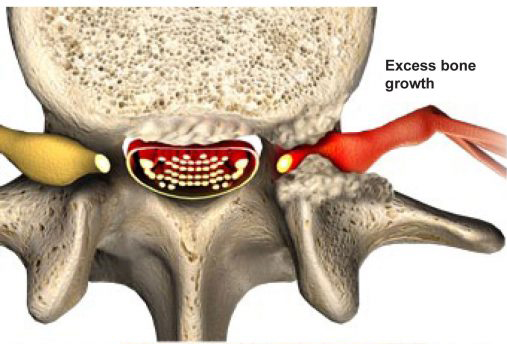Primary care physicians are usually the first to see patients with symptoms of spinal stenosis. However, when painful symptoms continue or progress, it’s important to see a spine specialist who can diagnose and treat this condition.
What is Spinal Stenosis?
Spinal stenosis is when the spaces in a person’s spine narrow. This can add pressure on the nerves that move throughout the spine. This condition mostly occurs in the neck and lower back. There are two types of this condition; cervical stenosis and lumbar stenosis. Lumbar stenosis is the most common form of this condition and happens in the lower area of your spine. Cervical stenosis happens when the nerves narrow in the neck.
Symptoms
A majority of patients have proof of this condition through a CT or MRI scan, but they don’t show any symptoms. When or if the symptoms make themselves known, they tend to get worse as time goes on. Furthermore, the symptoms do vary on the type and location of this condition.
The symptoms of cervical stenosis include:
Tingling in the arm, hand, leg or foot
Feelings of weakness
Trouble with balancing and walking
Pain in the neck
Bladder or bowel dysfunction, which only happens with severe cases
The symptoms of lumbar stenosis include:
Back pain
Cramping or pain in one leg or both when standing up for long intervals or when you walk
Weakness in the leg or foot
Tingling or numbness in the leg or foot
If you experience any of these symptoms and suspect you have stenosis, see either your doctor or head to the nearest emergency room.
Causes
The spine goes all the way from the neck to the lower back. The bones on the spine form something is known as a spinal canal, which protects the spinal cord. A few people are born with a smaller spinal canal. In most cases of this condition, however, it only happens when something causes the space to narrow. A few causes of this condition may include herniated disks, bone overgrowth, tumors, thick ligaments or injuries to the spine.
Risk Factors
Most people who suffering from this condition are 50 years old or above. Although degenerative changes may cause stenosis in younger patients, there are other causes that must be considered. These might include a form of trauma, a genetic disease that affects bone development or a deformity like scoliosis.
Complications
If by some chance your cervical or lumbar stenosis goes untreated, not only will it get worse, you may experience severe complications. Aside from numbness and weakness, you may experience incontinence, problems keeping your balance and in extreme cases, paralysis.
Make an Appointment today!
Advanced Spine Centers
1705 Ohio Dr. Ste #300, Plano, TX 75093
Toll Free 1-833-60-SPINE
Local 972-499-5457

